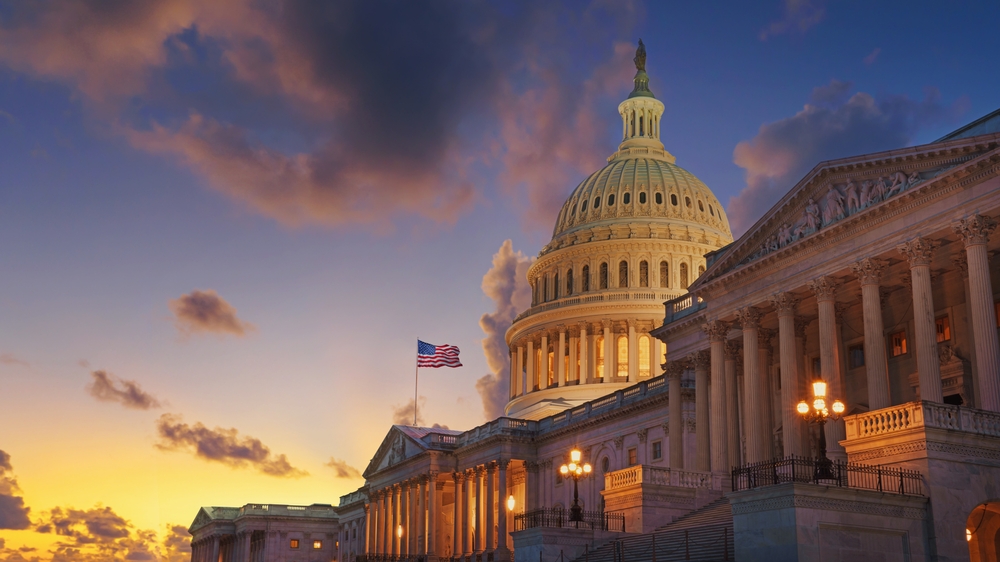The United States Senate has approved a crucial funding bill that could end the longest government shutdown in American history within days. Senators voted 60-40 late on Monday, with nearly all Republicans and eight Democrats backing the deal. The bill keeps the government funded through the end of January.
The measure now heads to the House of Representatives, where lawmakers must pass it before President Donald Trump can sign it. Trump said earlier on Monday that he would be willing to approve the agreement. The breakthrough followed weekend negotiations between both parties to restart essential services and bring hundreds of thousands of federal workers back on the job.
Cross-Party Votes Secure Victory
Republicans hold a narrow 53-47 Senate majority and needed at least 60 votes to pass the measure. Democratic Senators Dick Durbin, John Fetterman, Catherine Cortez Masto, Maggie Hassan, Tim Kaine, Jackie Rosen and Jeanne Shaheen broke with their party to support it. Maine’s independent senator, Angus King, who aligns with Democrats, also voted in favour.
Only one Republican, Rand Paul of Kentucky, joined most Democrats in opposing the bill. When the vote result was announced, the nearly empty chamber erupted in applause. “We are reopening the government and ensuring federal employees receive their rightful pay,” said Senator Susan Collins, a Republican who helped craft the legislation.
Shutdown’s Deep Impact Across the Country
Since October, the shutdown has left about 1.4 million federal employees either working without pay or placed on unpaid leave. The effects have rippled through daily life, disrupting travel, delaying benefits, and straining key programs.
Air travel suffered heavily on Monday, with more than 2,400 flights cancelled and over 9,000 delayed, according to data from FlightAware. Food assistance for 41 million low-income Americans has also been disrupted, while agencies nationwide have faced reduced operations or complete closures.
House Braces for Tight Vote
The Republican-controlled House of Representatives now faces the next challenge. Members have been away from Washington since mid-September, but Speaker Mike Johnson has recalled them to vote. Debate on the funding bill begins Wednesday.
Republicans hold a slim two-seat majority, meaning every vote will count. The timeline for a final decision remains unclear, though the pressure to end the shutdown is growing rapidly.
What the Deal Includes
The agreement funds the government through 30 January. It provides full-year funding for the Department of Agriculture, military construction projects, and legislative agencies. It also ensures back pay for federal employees affected by the shutdown and extends funding for the Supplemental Nutrition Assistance Program (SNAP) until next September.
The bill guarantees a December vote on extending healthcare subsidies that are set to expire this year. These subsidies help millions of Americans afford insurance through federal marketplaces. Democrats had refused to support any funding package that ignored this issue.
Divisions Emerge Among Democrats
The compromise was negotiated between Senate Majority Leader John Thune, the White House, and Democratic Senators Jeanne Shaheen and Maggie Hassan of New Hampshire, as well as Maine’s Angus King. But not all Democrats supported the deal.
California Governor Gavin Newsom called the decision to back the agreement “pathetic.” Senate Minority Leader Chuck Schumer argued that it “does nothing meaningful to fix the nation’s healthcare crisis.”
Virginia Senator Tim Kaine, who voted for the bill, defended the move. He said federal workers in his state were “grateful” for the effort to end the shutdown. Thune pledged to revisit the healthcare issue by mid-December, but Speaker Johnson has said he will not schedule a House vote on it.
Trump Signals Readiness to Sign
President Trump expressed support for the deal earlier on Monday. “We’ll be opening our country very quickly,” he said from the Oval Office. “The deal is very good.”
If the House passes the bill, the government could reopen within days, ending a record-breaking shutdown that has halted services, strained families, and tested Washington’s ability to govern effectively.


